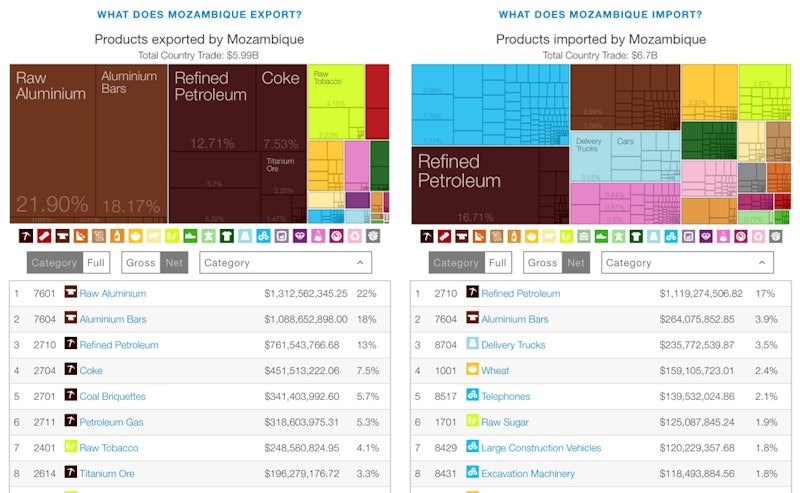Study Notes
Growth and Development in Mozambique
- Level:
- A-Level
- Board:
- AQA, Edexcel, OCR, IB
Last updated 22 Mar 2021
Mozambique is a really interesting country to study from an economic development perspective.
Rapid economic growth
In recent years it has experienced one of the fastest GDP growth rates in the world well in excess of 10 per cent per annum. Real GDP growth is forecast to slowdown to 7% in 2015 as a result of severe floods in the north of the country last January which impacted agricultural output and transportation. This emphasises the vulnerability of low income countries to the effects of volatile weather patterns linked directly to the effects of climate change.
High dependency on farming, coal and (in the future) natural gas
At the heart of their recent growth has been surging coal production and new investment in natural gas and infrastructure. Annual growth in agriculture (which accounts for 80% of employment) and manufacturing remain below potential largely for structural reasons, including infrastructure constraints and an under-developed labour market.
Inflation
Rapid growth has also contributed to relatively high inflation which is is set to be around 5% on average this year, with lower food and fuel prices balancing pass-through effects from the a depreciation of the Mozambique currency.
Inward investment
One of the major factors affecting Mozambique in recent years has been their top ranking for inward foreign direct investment within the African continent. Mozambique is forecast to receive around $5 bn in 2015, close to 30% of GDP, driven by investments in mining and gas. In spite of lower fuel prices, Andarko (US) and Eni (Italy) are hoping to start full-scale production of liquified natural gas (LNG) LNG in 2020 at the earliest.

World's biggest current account deficit and export dependence on aluminium, tobacco and sugar
Another important feature of their economy is the very high current account deficit - indeed it is the world's biggest at the moment according to data from Trading Economics.
The current account deficit remains structurally high, reflecting surging imports of capital goods for "megaprojects" in the resources sector (accounting for 25% of total imports). The deficit is expected to reach 40% of GDP in 2015. Exports are dominated by aluminium (25% share in 2014) and coal (14%, on a sharp increasing trend), followed by agricultural commodities (tobacco and sugar).
South Africa is the main trade partner (30% of imports, 20% of exports in 2014).
Deficit and debt
The government runs a large fiscal deficit (6.5% in 2015) and public debt is around 60% of GDP. Foreign aid still contributes one third of public revenue.
Poverty and ease of doing business
GDP per capita (USD 630 forecast in 2015) is one of the lowest in the world. Poverty has not dropped significantly in the past few years, reflecting an economic growth driven by capital-intensive megaprojects, not resulting in significant job creation. Governance indicators are weak and the business climate is poor.
Although Mozambique climbed 15 places in the 2015 World Bank's Doing Business survey, it still ranks 127 out of 189 economies. The government has announced efforts to promote private sector participation in the economy.
You might also like

Mozambique eyes commodities boom
31st May 2014

Dash for Gas in Mozambique
17th February 2012
Lucrative rubies might bring a resource curse
11th February 2017

Can Mozambique close their rural infrastructure gap?
31st January 2020
Growth and Development Profile: Mozambique
Topic Videos

Ten Years On - Mozambique starts to export liquified natural gas
13th November 2022

Climate Change - Building Resilience with Education and Flood Defence
25th January 2024
